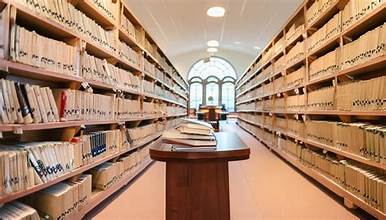The purpose of this assignment is to prepare the structure for curating appropriate references and citations about your research by creating the format for an Annotated Bibliography for next week’s assignment.
We were asked to submit the set-up of our Annotated Bibliography in APA format with a title page and at least two references. Depending on our computer system and available technology, we were advised to follow the suggested resource links with instructions on developing an Annotated Bibliography.
Those of us using Word 2007/2010 were pointed to p. 14-15 of the Action Practitioner Research Process Handbook for instructions on setting up a database to record the reference and citation information for two articles in our chosen topic area.
The following sites served as additional sources of information.
Resources for Assignment 1-B
- Video and transcript of video with instructions on how to write an Annotated Bibliography from the University of Maryland Library. UMUC Library: How to Write an Annotated Bibliography
- Article with helpful suggestions on how to write an annotated bibliography from the Cornell University Library. The Annotated Bibliography – How to Prepare an Annotated Bibliography
- A collection of videos demonstrating the process for setting up an Annotated Bibliography in Word. https://www.bing.com/videos/search?q=Step+by+Step+How+to+Write+a+Bibliograp hy&&view=detail&mid=079934AB93AAB27A4BCD079934AB93AAB27A4BCD&rvsmid =C523A1A6AF26C7F7F4FCC523A1A6AF26C7F7F4FC&FORM=VDRVRV
Annotated Bibliography:
Gamified Project Based Learning (GPBL)
Frank Jamison
Sanford College of Education, National University
ITI690 Inspired Teaching Inquiry
Dr. Deborah Algario
May 12, 2024
Annotated Bibliography
Malhotra, R., Massoudi, M., & Jindal, R. (2020). An innovative approach: Coupling project-based learning and game-based learning approach in teaching software engineering course. IEEE. https://doi.org/10.1109/TEM-SMET.2020.9557522
This article investigates the application of Gamified Project Based Learning (GPBL) in software engineering education, focusing on how integrating project-based and game-based learning approaches can enhance student engagement and better prepare them for professional practice. The authors argue that traditional educational methods in software engineering fail to fully engage students, suggesting that incorporating gamification elements into project-based learning environments can significantly increase motivation and learning effectiveness. The paper offers insights into how such an approach can bridge the gap between academic learning and industry demands by detailing a model where students participate in gamified projects that mimic real-world software development scenarios. It discusses the design and implementation of these gamified projects, evaluates their impact on student performance, and explores potential improvements and future directions for this educational model. The study provides empirical evidence demonstrating that students engaged in GPBL exhibit better understanding and higher performance than those in traditional learning settings. This contribution is particularly valuable for educators and curriculum designers seeking innovative ways to enhance software engineering education and to make learning more engaging and applicable to real-world contexts.
Wang, Y. H. (2020). Integrating games, e-books and AR techniques to support project-based science learning. Educational Technology & Society, 23(3), 53–67.
In this research, Yi Hsuan Wang explores the effectiveness of integrating advanced technological tools—specifically games, e-books, and augmented reality (AR)—into project-based learning (PBL) environments to support elementary science education. The study focuses on how these technologies can be combined to create a comprehensive learning model that engages students and enhances their ability to understand and apply scientific concepts. The integration of e-books provides accessible content and background information, AR adds an interactive visual layer that helps in conceptualizing complex scientific ideas, and games introduce elements of challenge and engagement that motivate learners. Wang’s method involved a comparative study with two groups of elementary students, one using the integrated tech approach and the other using traditional methods, to assess differences in learning outcomes and engagement levels. The findings indicate that while there was no significant difference in quantitative learning outcomes between the two groups, qualitative feedback from students suggested that the integrated approach led to higher engagement and a more enjoyable learning experience. This paper contributes to the field by highlighting the potential of technology-enhanced GPBL to make science education more dynamic and appealing to young learners and by offering practical insights into how various digital tools can be effectively combined in educational settings.



